When the heat turns relentless — whether from the scorching summer, an intense workout, or those sudden hormonal hot flashes — your body sends clear signals that it’s time to cool down. Sure, you can crank up the AC or reach for an ice-cold drink, but what you eat can also become a powerful tool to regulate internal temperature and restore balance.
Here’s the truth: certain foods don’t just hydrate — they actively cool, soothe inflammation, and replenish electrolytes that escape your system with every drop of sweat. And while modern science talks about hydration and minerals, ancient systems like Ayurveda and Traditional Chinese Medicine (TCM) have long recognized ingredients that naturally pacify internal heat and bring the body back into harmony.
Signs Your Body Needs Cooling Foods

Before loading your plate with cooling ingredients, it helps to know when your body is signaling an urgent need for relief from internal heat. Recognizing these signs allows you to respond proactively and restore balance:
- Excessive Sweating — Persistent or profuse sweating, even in mild conditions, indicates that your body is struggling to regulate temperature.
- Flushed or Red Skin — A warm, reddish complexion, especially on the face, points toward excess heat accumulation.
- Irritability and Headaches — Heat can agitate the nervous system, leading to mood swings, brain fog, and pounding headaches.
- Digestive Discomfort — Symptoms like acidity, bloating, or a burning sensation in the stomach are classic signs of internal heat overload.
- Fatigue or Dizziness — Feeling sluggish, lightheaded, or easily drained during hot weather is your body’s way of asking for hydration and cooling.
- Dry Mouth and Dehydration — A parched mouth, chapped lips, and reduced urine output often accompany overheating.
If you experience two or more of these symptoms regularly, it’s time to consciously incorporate more cooling foods into your daily diet to ease discomfort and boost overall well-being.
9 Foods to Lower Internal Heat
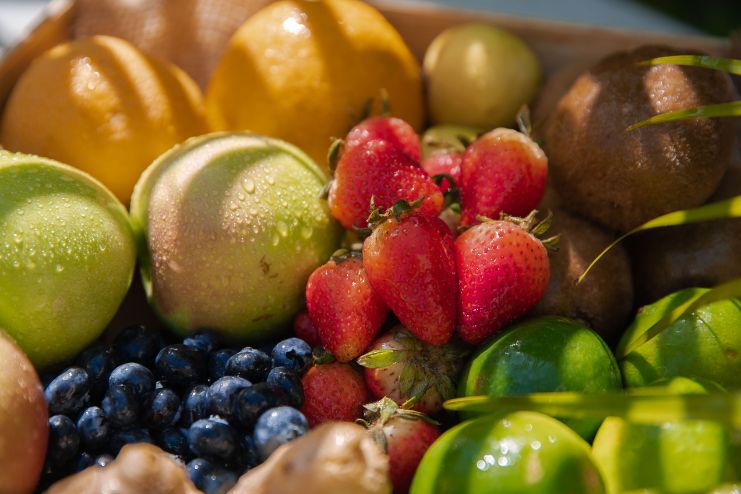
If you’re wondering how to cool down naturally through diet, beyond just sipping water, this guide delivers. Let’s break down 9 ultra-refreshing, nutrient-packed foods that will keep you feeling light, hydrated, and heat-resilient throughout the season.
1. Watermelon
When it comes to foods that scream “summer relief,” watermelon reigns supreme. Over 90% water, this juicy fruit hydrates fast while delivering a punch of antioxidants like lycopene, which helps protect skin from sun-induced damage and inflammation.
Why it cools:
- Replenishes fluids rapidly
- Natural electrolytes (potassium, magnesium) restore mineral balance
- Lycopene reduces oxidative stress caused by heat
How to enjoy:
- Fresh, chilled slices as a snack.
- Blend into smoothies with mint and lime.
- Toss into salads with feta and cucumber for a refreshing twist.
2. Cucumber
Crunchy, crisp, and ultra-hydrating, cucumbers are a staple in a body-cooling diet. They are 96% water and rich in vitamin C, which helps reduce skin irritation and internal inflammation. According to Ayurveda, cucumber has cooling and calming (Sheetal) properties, making it ideal to pacify excess heat (Pitta).
Why it cools:
- High water and silica content hydrate tissues
- Mild diuretic effect supports detoxification
- Silica supports skin hydration and elasticity
How to enjoy:
- Sliced raw with lemon and a pinch of salt.
- Blended into cucumber-mint water.
- Mixed in yogurt raita or cold salads.
Read More: 13 Health Benefits Of Cucumber Water – Know Why Detox Is Important
3. Coconut Water
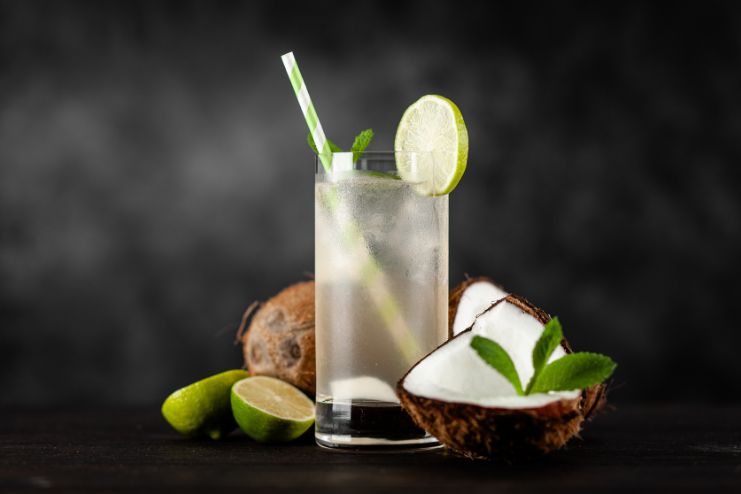
Nature’s electrolyte drink, coconut water, is revered in Ayurveda and TCM for its cooling, nourishing, and rehydrating qualities. It’s rich in potassium, magnesium, calcium, and natural sugars that quickly restore electrolyte balance—perfect after sweating in the heat or post-exercise.
Why it cools:
- Balances electrolytes lost via sweat
- Hydrates without heavy calories
- Nourishes depleted energy reserves
How to enjoy:
- Drink freshly cracked coconut water chilled
- Use in smoothies or fruit popsicles
- Mix with lemon juice and mint for an electrolyte-rich refresher
Read More: Unlock the Power of Coconut Water: 10 Health Benefits You Need to Know
4. Mint
Mint doesn’t just taste refreshing — it creates a cooling sensation in the mouth and body due to menthol, a compound that activates cold-sensitive receptors. In Ayurvedic cooling food traditions, mint is prized for reducing digestive heat, calming inflammation, and soothing headaches triggered by excess heat.
Why it cools:
- Activates the body’s cold receptors
- Reduces digestive and inflammatory heat
- Relieves headaches linked to internal heat
How to enjoy:
- Brewed into iced mint tea.
- Chopped into yogurt dips or salads.
- Blended in smoothies and lemonades.
Read More: Cool and Refreshing: 7 Surprising Benefits of Adding Mint to Your Daily Diet
5. Yogurt
In many cultures, yogurt is a go-to summer staple for internal heat relief through diet. Rich in probiotics and calcium, yogurt cools the gut lining, improves digestion, and balances Pitta energy in Ayurveda. It also has hydrating and electrolyte-replenishing properties, especially when paired with fruits and herbs.
Why it cools:
- Soothes the digestive tract and reduces inflammation
- Replenishes calcium, potassium, and probiotics
- Balances gut flora, improving nutrient absorption
How to enjoy:
- Stir into cucumber raita or tzatziki.
- Blend into fruit smoothies.
- Eat with honey and chia seeds as a snack.
Read More: Top 9 Yogurt Benefits For Skin
6. Leafy Greens (Spinach, Lettuce)
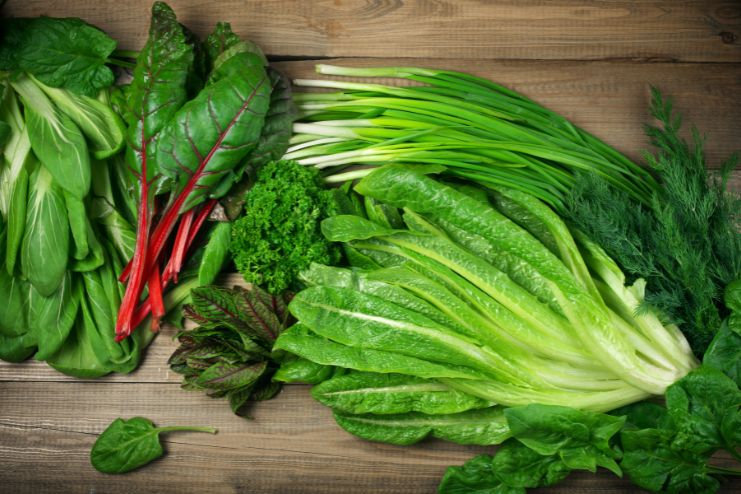
Leafy greens like spinach, lettuce, and Swiss chard are water-rich veggies that cool and hydrate while providing essential nutrients like magnesium, which relaxes muscles and supports fluid balance. Their alkaline nature can counteract acidity and inflammation linked to internal heat.
Why it cools:
- High water and fiber content
- Alkaline nature soothes digestive inflammation
- Magnesium-rich to ease muscle heat and tension
How to enjoy:
- Toss into chilled salads
- Blend into green smoothies
- Wrap in rice paper rolls with herbs and veggies
7. Berries (Strawberries, Blueberries, Raspberries)
Juicy and antioxidant-packed, berries are summer’s sweet secret weapon. Their high water content (around 85%) hydrates, while vitamin C and flavonoids combat oxidative stress and inflammation triggered by heat exposure.
Why it cools:
- Antioxidants soothe skin and internal inflammation
- Hydrates with natural sweetness
- Supports skin and immune health
How to enjoy:
- Eat fresh by the handful
- Add to yogurt, smoothies, or fruit salads
- Blend into chilled berry sauces for desserts
8. Celery
Often overlooked, celery is a natural cooling remedy with 95% water content and an impressive dose of potassium, sodium, magnesium, and vitamin C. It naturally balances fluids, prevents dehydration, and reduces heat-induced bloating. TCM identifies celery as a yin-enhancing food that cools the liver and calms the nervous system.
Why it cools:
- Electrolyte-rich and hydrating
- Eases bloating and fluid retention
- Calms liver and nervous system heat
How to enjoy:
- Snack with hummus or nut butter.
- Add chopped into salads.
- Juice with cucumber and apple.
9. Citrus Fruits (Lemon, Lime, Orange)
Citrus fruits deliver a double punch — hydration and vitamin C. Their tangy, sour flavors stimulate salivation, which cools the mouth and supports digestion. Lemons and limes are also traditionally used in Ayurveda to pacify Pitta dosha (heat energy) and detoxify the body.
Why it cools:
- Hydrates and stimulates cooling salivation
- Boosts vitamin C to combat heat-related stress
- Supports detoxification and digestion
How to enjoy:
- Freshly squeezed into water or herbal teas.
- Zested onto salads, fish, and desserts.
- Juiced into citrus vinaigrettes.
5 Lifestyle Habits to Naturally Cool Your Body
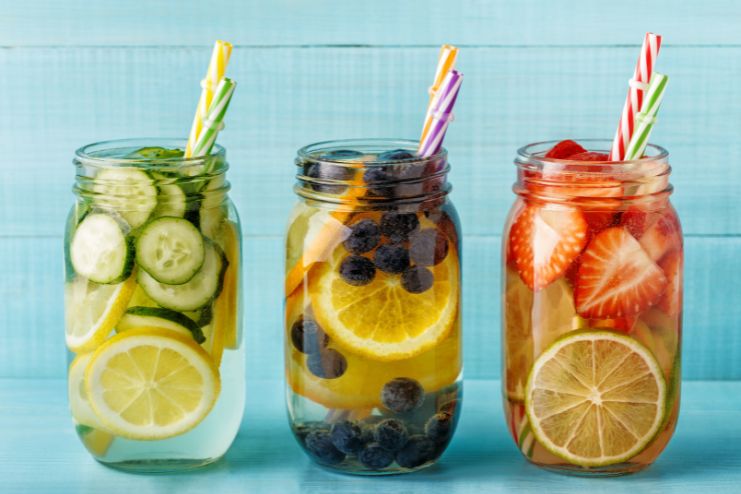
Cooling your system isn’t just about what’s on your plate — your daily habits play an equally powerful role in regulating internal heat. From how you move to how you breathe, small changes can provide lasting relief and improve your body’s resilience to high temperatures.
Here are 5 lifestyle practices that work in harmony with cooling foods to keep you refreshed, calm, and energised.
1. Pranayama (Cooling Breathwork)
Practices like Sheetali and Sheetkari pranayama — slow, cooling breathing exercises — instantly lower body heat and calm the nervous system. Just 5–10 minutes of daily practice can ease irritability, reduce sweating, and boost mental clarity.
How to try it: Inhale through a rolled tongue or clenched teeth (Sheetali/Sheetkari), exhale slowly through the nose.
2. Oil Massage (Abhyanga)
A gentle self-massage with cooling oils like coconut or sunflower oil before a bath can soothe inflamed skin, improve circulation, and reduce internal heat. The cooling, grounding effect also nourishes the nervous system and promotes restful sleep.
3. Early Morning Walks
Walking in the early morning cool air (before 9 AM) helps regulate circadian rhythms, reduce stress hormones, and cool the body naturally. Exposure to morning light balances cortisol levels, supporting energy without overheating.
4. Hydration Rituals
Beyond drinking plain water, infuse your water with cooling herbs like mint, fennel seeds, or rose petals. These natural infusions hydrate more effectively and introduce subtle cooling compounds to your system throughout the day.
5. Cooling Showers and Foot Soaks
A lukewarm or cool shower, especially after outdoor exposure, quickly dispels body heat. Alternatively, a 5-minute foot soak in cool water with a few drops of sandalwood or peppermint oil can rapidly lower body temperature and relax the mind.
Read More: How To Reduce Body Heat? 20 Natural Ways To Combat Heat Stress
Cooling Meal Ideas
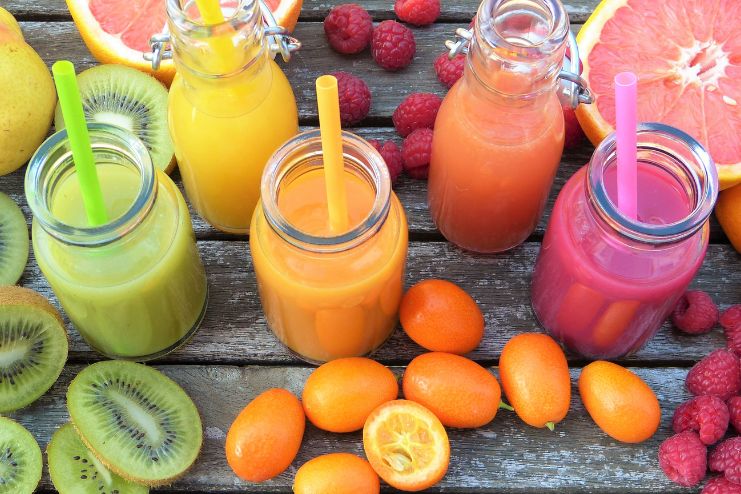
Knowing which foods are cooling is one thing, but weaving them into tasty, satisfying meals is where the real magic happens. Here are some easy and delicious ideas to help keep your body cool throughout the day:
- Breakfast: Start your morning with a chia seed pudding soaked in coconut milk, topped with fresh berries, mint leaves, and a drizzle of honey. This hydrating combo is nutrient-dense and refreshing.
- Lunch: Opt for a quinoa salad tossed with cucumber, tomatoes, mint, coriander, and a yogurt-lemon dressing. Pair with a bowl of chilled cucumber raita to amplify the cooling effect.
- Snack: Blend up a watermelon-mint smoothie with lime juice and a pinch of rock salt. It’s hydrating, mineral-rich, and perfect for afternoon slumps.
- Dinner: Go for grilled fish or paneer served alongside a citrus salsa (orange, grapefruit, mint) and a cucumber-onion salad. Finish with a bowl of chilled coconut water or buttermilk.
- Dessert: Enjoy a bowl of fresh papaya drizzled with lemon juice and sprinkled with chia seeds — a naturally cooling and digestion-friendly treat.
These combinations not only cool your system but also nourish you without weighing you down — ideal for maintaining energy levels on hot days.
Precautions: Can Cooling Foods Be Overdone?
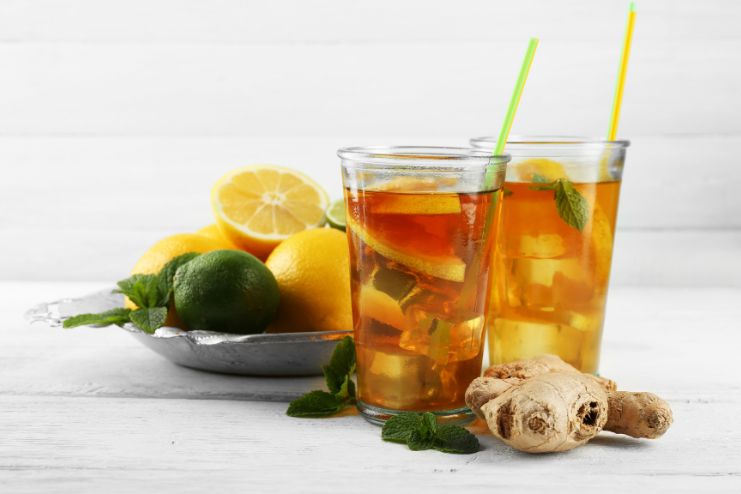
While cooling foods offer immense benefits, balance is key. Consuming them excessively or inappropriately can dampen digestion and create other imbalances, especially for individuals with a naturally cold constitution.
- Weakened Digestion: Overconsumption of watery, raw, or excessively cold foods can suppress digestive fire (Agni), leading to bloating, sluggishness, and poor nutrient absorption.
- Chilled Extremities and Fatigue: If your hands and feet frequently feel cold, or if you often experience lethargy after meals, you might be overdoing the cooling elements.
- Imbalance in Kapha or Yang-deficiency types: According to Ayurveda and TCM, those with dominant Kapha dosha or Yang-deficiency (cold constitution) may experience worsened sluggishness and mucus build-up from excessive cooling foods.
To strike the right balance:
- Pair cooling foods with mild warming spices like ginger, cumin, or cinnamon.
- Opt for room temperature over ice-cold beverages.
- Tune into how your body feels — if symptoms of coldness arise, dial back and reintroduce gentle warming foods.
By balancing cooling foods mindfully, you’ll enjoy their benefits without compromising digestion or overall vitality.
Conclusion
Your diet isn’t just fuel — it’s your body’s frontline defense against internal heat, dehydration, and fatigue. When you choose hydrating, electrolyte-rich, and naturally cooling foods, you empower your system to stay balanced and resilient.
The beauty of nature’s cooling remedies is that they’re delicious, accessible, and versatile for everyday meals. Your plate can become your personal thermostat, working with your body, not against it. Water-rich fruits, crisp veggies, electrolyte-packed drinks, and anti-inflammatory herbs offer fast hydration and deep cellular recovery. Whether you’re crafting smoothies, vibrant salads, or quick snacks, these ingredients slide effortlessly into your daily routine.
The key is consistency — make them regular players, not occasional fixes. That’s how you build long-term heat resilience and inner calm.
References
- https://www.medicalnewstoday.com/articles/why-am-i-always-hot
- https://www.health.com/why-am-i-always-hot-8349171
- https://www.healthline.com/health/why-am-i-always-hot
- https://www.mayoclinic.org/diseases-conditions/heat-exhaustion/symptoms-causes/syc-20373250
- https://www.medicalnewstoday.com/articles/326235
- https://www.ncbi.nlm.nih.gov/books/NBK459311/
- https://continentalhospitals.com/blog/cooling-foods-to-help-you-survive-the-summer-heat
- http://bebodywise.com/blog/body-cooling-foods/
- https://www.homeocareclinic.in/diet-to-reduce-heat-in-the-body/
- https://firstresponsehealthcare.com/blog/ae/dubai/how-to-reduce-body-heat-by-taking-cooling-foods/
- https://plantigo.in/blogs/plant-based-protein-powders/11-best-body-cooling-foods-to-beat-the-summer-heat
- https://www.healthline.com/health/how-to-reduce-body-heat
- https://www.medicalnewstoday.com/articles/326235
- https://pharmeasy.in/blog/10-foods-to-reduce-body-heat-naturally/
In this Article



















